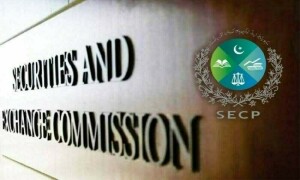Fauji Cement Company Limited
Fauji Cement Company Limited (PSX: FCCL) is a public limited company established under the Companies Ordinance, 1984 in 1992. It began operations in the following year in 1993. The company manufactures and sells various kinds of cement.
It has an annual total production capacity of over 3.5 million tons of cement. It caters to both, the local market as well as the global market. Some of its export destinations are Sri Lanka, South Africa, Middle East, etc.It also has two Waste Heat Recovery Power Plants (WHRPPs) of 12 MW and 9 MW, one set up in 2015 and another in 2018.
Shareholding pattern

As at June 30, 2021, over 47 percent shares are held under the associated companies, undertakings and related parties. Within this category, a major shareholder is Committee of Admin Fauji Foundation. Close to 28 percent shares are owned by the local general public, followed by roughly 5 percent in each of the following: insurance companies, mutual funds, and joint stock companies. The directors, CEO, their spouses and minor children own less than 1 percent shares, while the remaining close to 8 percent shares are with the rest of the shareholder categories.
Historical operational performance
The company has largely seen a growing topline with the exception of a few years. Profit margins, on the other hand, have followed a declining trend in the last six years particularly, until FY20, after which it witnessed a sharp incline.

Revenue in FY18 grew by 3.6 percent to cross Rs 21 billion in value terms. While the industry dispatches witnessed a 14.9 percent rise, company dispatches posted a growth of 16.5 percent. The industry saw a rise in consumption due to increase in housing, commercial and infrastructure projects. For the company, however, the 16.5 percent growth in dispatches kept prices in check therefore it only translated into a mere 3.6 percent incline in revenue. On the other hand, cost of production reduced to 76 percent as the company started Line 2 that decreased the reliance on other cement plants for clinker procurement. Thus, gross margin improved to 23.8 percent. This also reflected in the net margin that was recorded at a higher 16.2 percent.

In FY19, revenue contracted by close to 2 percent. Total dispatches for the industry increased marginally by 1.9 percent. Within this, export dispatches saw a double-digit growth that was offset by a decline in local dispatches. However, when compared with increased installed capacities, total dispatches had actually declined. As cost of production continued to decline, gross margin improved to 25.6 percent for the year. However, due to a major charge of deferred tax expense, net margin decreased to 13.6 percent.

The company witnessed the biggest contraction in revenue since FY11, as it fell by over 17 percent in FY20. Total dispatches for the industry grew marginally by 2 percent, largely supported by sea exports. In terms of volumes, sales grew by 20 percent. However, the company saw a reduction in revenue due to decline in retention price. The excess capacities created a situation of over-supply that reduced selling prices. On the other hand, demand was affected by lower PSDP allocation and CPEC projects that were hampered by the onset of Covid-19 pandemic. Thus, gross margin fell to 3.8 percent for the year. With operating, finance and tax expenses, the company posted a net loss for the first time of Rs 60 million.

In FY21, the company saw a substantial growth in topline as it grew by nearly 41 percent to reach an all-time high revenue of over Rs 24 billion. Total dispatches for the company registered an incline of nearly 13 percent. In addition, retention was also higher. This also reflected in gross margin that was considerably higher year on year at nearly 25 percent. There was a decrease in fuel and power costs despite increases in electricity prices due to higher captive power generation that contributed 69 percent of the requirement. With finance expense also reducing, net margin improved to 14.3 percent.
Quarterly results and future outlook
The first quarter of FY22 saw revenue higher by 26 percent year on year.Capacity utilisation stood at above 90 percent. This can be attributed to a growingdomestic demand. With costs under control, the company earned a higher net margin at 19.6 percent versus 12.6 percent in 1QFY21. Revenue in 2QFY22 was 36 percent higher year on year. This was attributed to better retention prices that also reflected in better profit margins as the company posted a net margin of 17.7 percent compared to 14.8 percent seen in 2QFY21.

In 3QFY22 too, revenue was higher year on year, by almost 30 percent. While export dispatches continued to decline due to increase in international coal prices, sea freights and political uncertainty in Afghanistan, domestic dispatches were relatively stable as they grew marginally. However, profitability reduced year on year as cost of production increased as substantial fuel and power cost was still being met from other than the captive power generation. This is reflected in the slightly lower net margin of 16 percent. While domestic demand is expected to remain more or less stable, exports, particularly to Afghanistan are dependent on economic and political stability. The company is also expecting that formalities regarding merger of Askari Cement Limited with and into Fauji Cement Company Limited will be completed in the last quarter of FY22.

























Comments
Comments are closed.